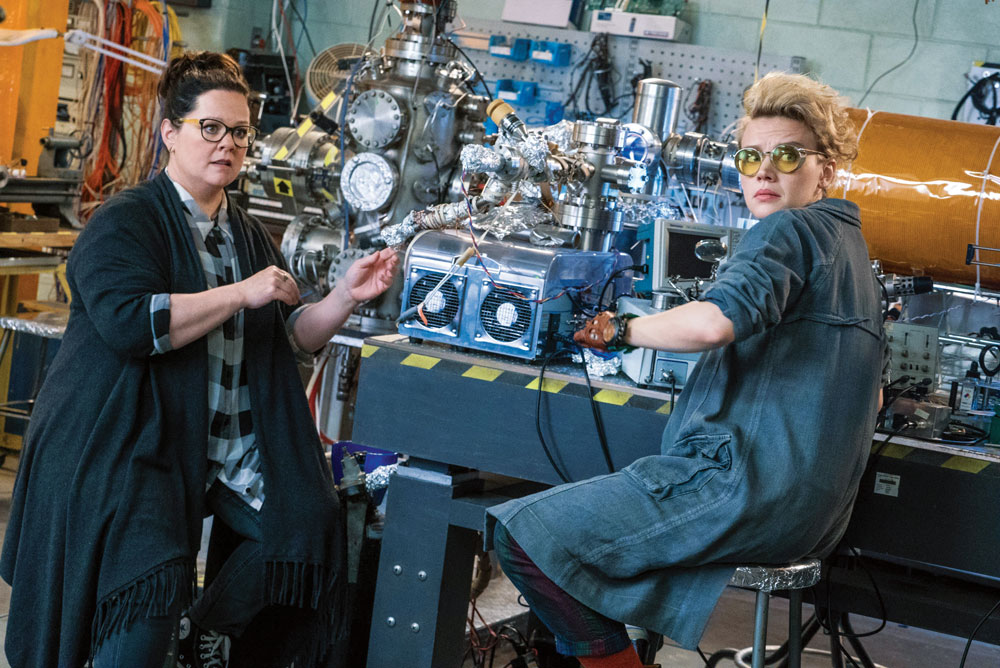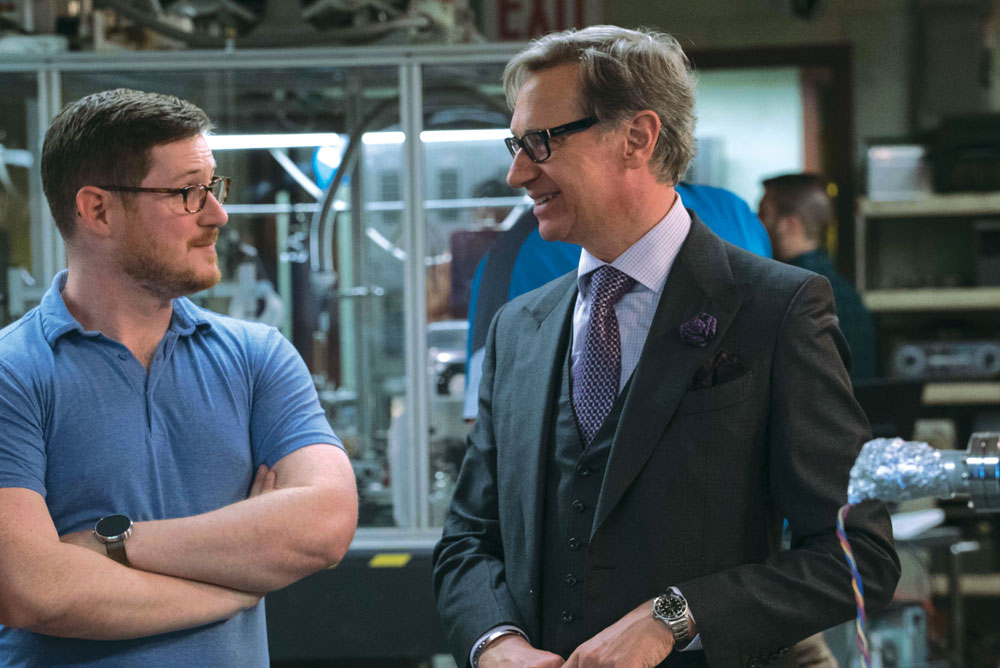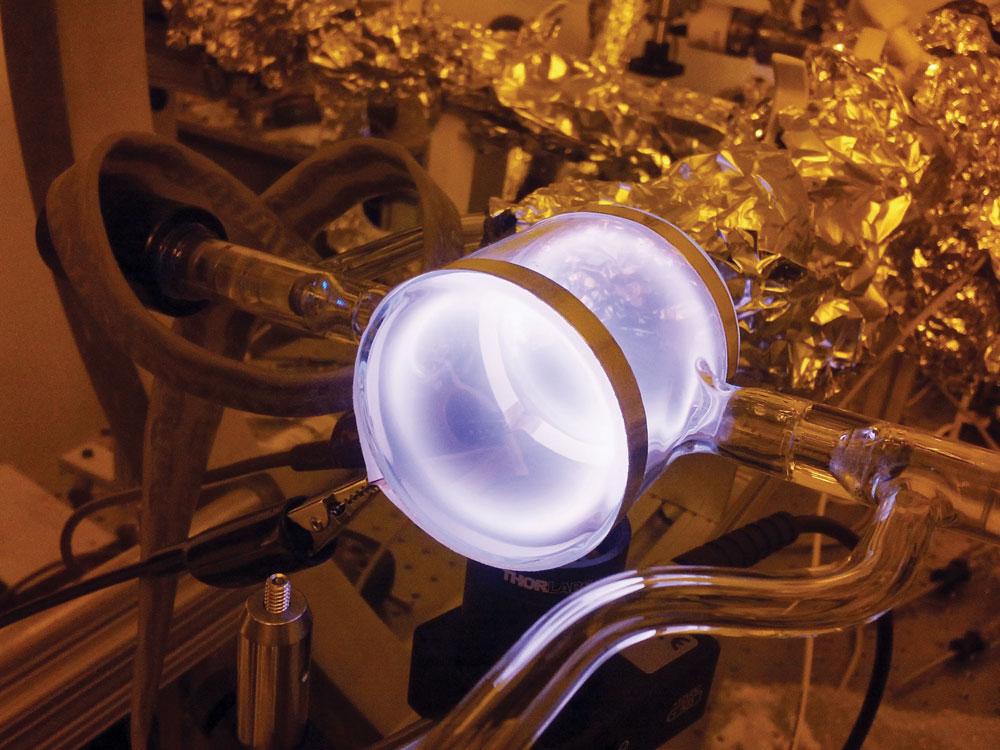’Hoo You Gonna Call
Alumnus James Maxwell brought real science to Ghostbusters

In the spring of 2015, James Maxwell (Col ’04, Grad ’10, ’11), then a postdoctoral researcher in nuclear physics, was working in his lab at the Massachusetts Institute of Technology when a group of Columbia Pictures set designers entered the room. They told Maxwell they were scouting for props for a project called Flapjack and circled around a glowing copper-and-glass apparatus he was working on.
Flapjack turned out to be a code name for Ghostbusters. When director Paul Feig saw Maxwell’s helium-3 polarization experiment, with its copper coil magnets, laser and glass tubes, he wanted it as a prop for the movie. Maxwell was asked to replicate his equipment on the set and eventually landed a job as technical consultant on the film.

Although his scientific work has nothing to do with ghosts—Maxwell’s helium-3 experiment relates to the study of the nuclei of atoms—he jumped at the chance to work on the film. “I was secretly, inside, freaking out because I loved Ghostbusters as a kid,” he says. And so a model of his helium-3 apparatus became a major set piece in the film’s paranormal studies lab. “It’s all this movie magic stuff,” Maxwell says of the model, which had foam core, enlarged glass pieces and copper tubing, “but it ended up looking quite similar to my setup because, of course, it didn’t have to work. If you watch the movie … Melissa McCarthy and Kate McKinnon [sit] right in front of it.”
The film crew asked Maxwell to come to the Boston set to help the actors interact with the prop, and he chatted with stars McCarthy, McKinnon and Kristen Wiig about physics, the apparatus and his research. He explained to them “our hopes and dreams of having a polarized helium-3 ion beam at a future electron ion collider facility that the field of nuclear physics is working on building someday. That was pretty neat.”

At the director’s request, Maxwell, now a staff scientist at the Department of Energy’s Jefferson Lab in Newport News, Virginia, advised on the film’s updated proton pack, labeling it with, as he puts it, “realistic-sounding, physics jargon-y things.”
“What I tried to do was think, ‘How would this thing actually work?’” Maxwell says. “In order to fight these ghosts, how am I interacting with something that’s ethereal?” Maxwell put together a fictional abstract explaining why ghosts appear in some places but not others. “The laws of physics are not local,” he says, “but somehow these ghosts happen in localized places and times. I tried to explain that by saying that there’s this spectral ether that can be excited, so what you’re seeing is ghosts that are there all the time but only in certain times and places where they can interact with our world.”
Then he wrote a history of the proton pack, starting from its origins as a pushcart. “I spent a lot of time scratching my head at home on the weekends and at night over what would be the best way to improve a proton pack.”
In a Sony video promoting the movie, Maxwell explains the updated science behind the new packs: “The first thing that they asked me was ‘How would a proton pack work, with as few huge leaps of miraculous science as possible?’” The cyclotron of yore became a synchrotron, he explains, which then required superconducting, plus a cryogen system to keep the magnets cold.
Sony did not return requests for comment.
To Maxwell’s surprise, his words were used on packaging for Ghostbusters toys. Then, shortly before the movie was released, he got a call from Madame Tussauds in New York City, asking him to help make the wax museum’s “Ghostbusters Experience” more realistic. As a wax McKinnon works on a proton pack, a notification comes up.
“She gets this Skype call from me!” Maxwell says. “I filmed 10 of these little vignettes for them, pretending to be her collaborator.”
Maxwell and his wife attended the movie premiere, walking a green carpet instead of a red one (the movie uses a lot of green slime), and staying in the hotel where the original Ghostbusters was filmed.
“After all the work that I did, they put my name in the credits—‘James Maxwell, technical consultant,’” he says. “It was really a dream come true for a lowly physics post-doc.”